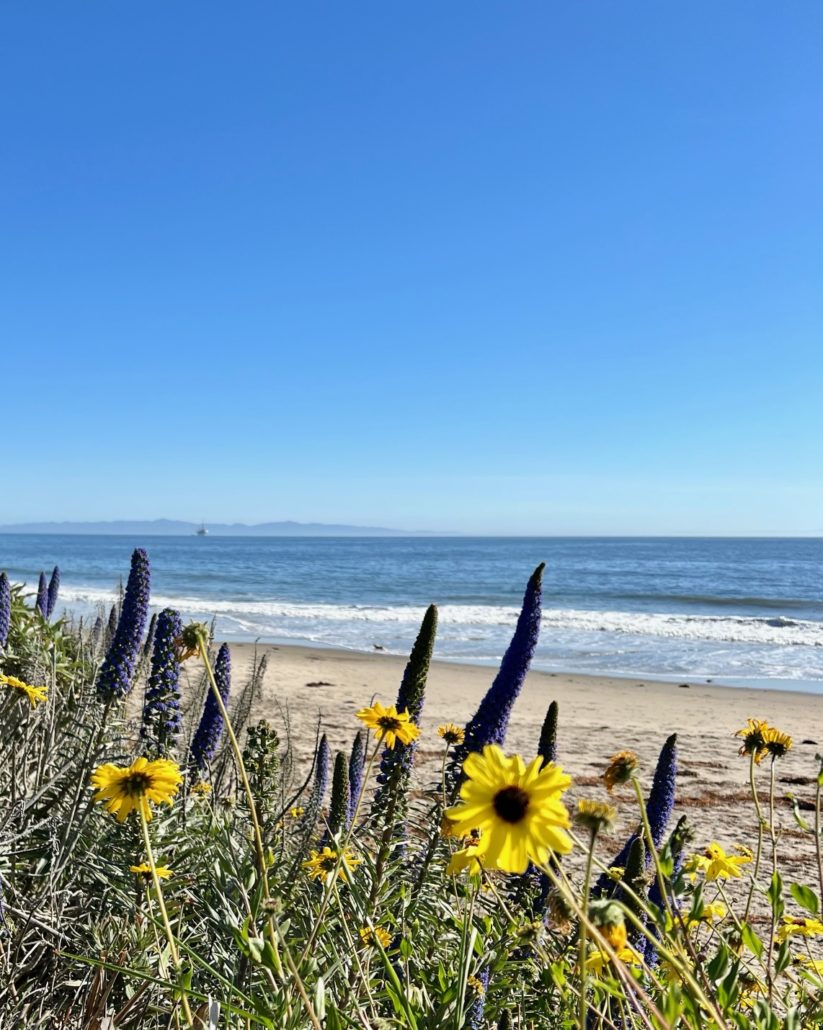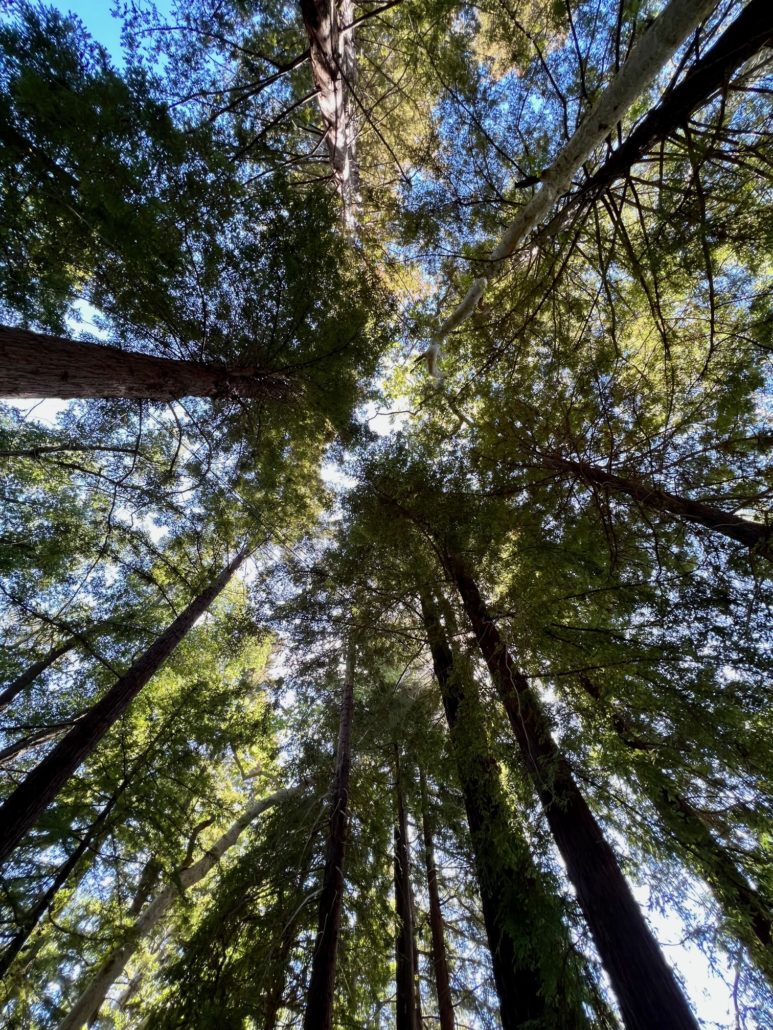Santa Barbara
by Stacey Margaret Jones
When a friend of mine from high school and I decided on Santa Barbara for a weekend reunion in March, I admit I didn’t choose it for its literary history, but because it was a wine-tasting destination I hadn’t yet visited. I’ve been to California just enough for it to continue to evoke its paradisical aura in my mind, but not so much that I’ve tired of its coastal beauty and ease of living.
But I couldn’t have been more wrong when I thought of Santa Barbara as a kind of northern suburb of Los Angeles. While they may be loosely connected via coastal communities, Santa Barbara, with its own airport and singular vibe stands on its own. And when I started looking for a literary connection to continue this series of literary travel blogs, I was thrilled to find Scott O’Dell’s Island of the Blue Dolphins is based on the incredible life of an indigenous woman, known in our language as Juana Maria, from the nearby Channel Islands.
I didn’t remember many specifics of the book itself, though I had read it, probably more than once, as a tween and teen. My mother is a retired young adult librarian who kept us in Newbery and Caldecott Award books for young readers when we were growing up. I promptly ordered my own copy to read on the trip. The book is 177 pages and is certainly a very pleasant travel read, as the chapters are short and engaging, and it is easy to pick up and put down. While it is for young readers (grades 5 through 8), as most adult readers of young-adult and middle-grades literature know, you’re never too old for a good book no matter how young its target audience. And this is a good book. The themes of the story of Karana and her solitary life on the island are just as compelling and enlightening today as they must have been when the book was published in 1960.
The book is historical fiction. O’Dell used the story of Juana Maria for his inspiration, taking known facts of her life—or bits of the stories that came to be told about her—filling in the blanks with his descriptive and believable prose. The real Juana Maria lived on the Channel Island of San Nicolas, 3 miles by 5 miles, for 18 years alone after missionaries abducted all the other members of her tribe to California. (The island chain holds evidence of some of the earliest known inhabitants of North America.)
What we do know is that in the early 1800s, Russian fur traders decimated both the island’s otter population and its indigenous people, leaving only 20 or so out of an estimated 300 Nicoleños, an Uto-Aztecan people. Franciscans from Santa Barbara’s mission went to the island to “rescue” the people… or bring them back to replace the native labor force that was dying off in the area of the mission. They brought all the remaining members of the tribe back to the mainland in 1835 except for two, Juana Maria and a boy, whose relationship to her was not known; he was perhaps her brother or her child. She was found by a hunter when she was around 50, living in a hut she’d made of whale bones, wearing a skirt made of cormorant feathers. She had domesticated some of the island’s wild dogs to be her companions.
The friars at the mission named her Juana Maria, as no one could understand her—no members of her tribe had lived long enough to be reunited with her. She was able to use sign language to convey that the boy she had remained with on the island had been killed by wild dogs—the very pack of dogs that gave her the companions she tamed.
Though healthy when brought to Santa Barbara, she died of dysentery only seven months after coming to the settlement, and she is buried at the Old Mission. Scott O’Dell’s prize-winning novel has kept her memory alive, using a great deal of what is known or believed about her as plot points for the book.
In the novel, Juana Maria is named Karana, and she jumps off the boat sent to take them to the mainland because her younger brother has not made it on board. The second day of their wait for the ship to return, her brother is killed by the wild dog pack, and she is all alone. Because she is old enough in the novel to know how to do the work of the tribe, she begins right away to make a safe shelter for herself, to collect food for winter and to keep the dogs at bay. She does tame one of the largest males and he becomes her companion for the rest of his life. She names him Rontu.
Karana must live with and on the land. She must entertain herself, defend herself, feed and clothe herself for decades while she waits as well as watches for the Russians who attacked her tribe before to return. She has escape routes and plans while simultaneously hoping for the ship that took her tribe to return for her. O’Dell’s masterful retelling never grows tedious, as he elides whole seasons and years, focusing on the pivotal and formative moments in her time on the island.
In this way, a person who was seen as a less valuable human by the forces that sweep the island clear of her people remains on the page as not only equal to those dangerous forces, but more admirable than they are, a girl who grows up as we turn the pages and continue rooting for her, wondering how we would do in that same situation.

It was an interesting book to reread for me, traveling on a women’s weekend with someone I had known at the age I was when Karana is left on the Island of the Blue Dolphins. Both the book and my beautiful friend’s face took me back to my tween and teen years in many ways, recalling our mutual hometown, my childhood life, my efforts just to make it ahead as I struggled like every teenager to figure out who I was, to think through the challenges in my path, to stay healthy and sane, to grow up and into a community I hoped was ahead for me.
The themes of this book, beyond survival, were the perfect companion to the nostalgia and celebration Gretchen and I felt and talked about at wine tastings and walking about Santa Barbara. It really was a great read for such a retreat.
If you go to Santa Barbara and want to investigate the sites relevant to the novel, you can visit some of the Channel Islands, though not San Nicolas. There are ferries to the islands from Santa Barbara. The islands, I’m told, are relatively undeveloped as they form a national park. In fact, there are no services at all except for a few vendors on concession boats. You can find out how to plan your visit on the Channel Islands National Park website. Here I must confess that we did not go to the park because it is a day trip requiring planning and gear that our short trip didn’t allow for. However, I loved Santa Barbara so much, I will definitely be returning, and the park is at the top of my list. If you’d like to get even more of a Karana experience, you are allowed to camp on the islands, which also requires advanced planning and reservations. I probably won’t do that…

You can visit the site of Juana Maria’s grave at the Old Mission Santa Barbara, which is worth a visit for many reasons. We took a self-guided tour ($15), and found the cloisters, church and graveyard particularly beautiful and calming. There’s a large lawn in front of the Mission where you can enjoy a sunny day along with the locals, and then spend quiet time looking for Juana Maria’s grave inside the walls. A short Uber drive away is the Santa Barbara Botanic Gardens, which we also visited, that includes only native California plants, including some redwoods, which may be the first time I have seen these magnificent trees for myself. It felt fitting to spend time in the natural world that fed and clothed Karana as I strolled with a friend from my girlhood and talked about our youth and where we now found ourselves as women in our 50s.
(If you do visit Santa Barbara, you may find yourself tempted to fly into LAX to save $$$ on tickets, which were on the high side, but if you can manage it, you’ll be glad not to fight LA traffic on the way there, and especially on the way back. When I asked an Uber driver how long it would take to get to SBA mid-day on a Sunday, he said, “Twelve minutes.” We arrived in plenty of time to have one last glass of wine together before we flew off in separate directions. I think the airport has five or six gates maximum, so it makes air travel’s harsh re-entry from vacation much more palatable.)
Some vacation spots you enjoy and when you leave you are glad you got to go, but you are thinking of your next trip and all the places you have left to see. When Gretchen and I had spent less than 24 hours in Santa Barbara, we were already planning on our returns, maybe bringing our families and working out all the other things we would do, as well as revisiting our favorites—like wine tasting, shopping and lunching in lovely Montecito down the road. Santa Barbara is particularly beautiful, open and accessible, a feast for the senses and the mind.
Reading Scott O’Dell’s Island of the Blue Dolphins on your own or with your family will enrich the experience all around, infusing history and meaning in what you see and do, even if you’re just rolling around between tastings and looking out to sea from the pier—a long time ago, Juana Maria looked back from her island toward the mainland wondering who or when a ship would return to collect her.


Thanks for the reminder about this book. I still have my Scholastic Books paperback of Island if the Blue Dolphins, but it has been many years since I read the cobalt blue book. I may reread it again soon, thanks to your blog. Doug and I loved Santa Barbara on one of our pre-Covid vacations, and I would like to go back.